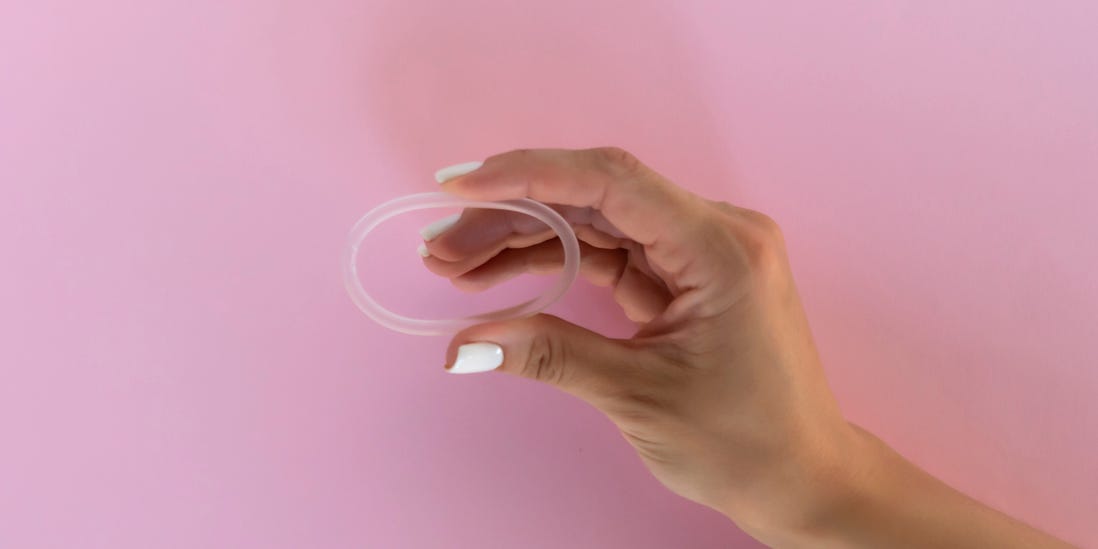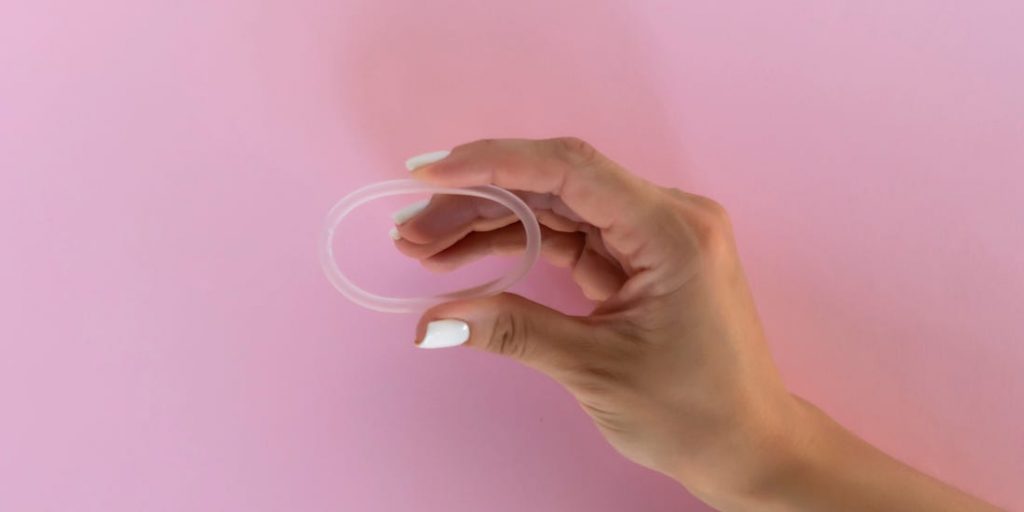
Irina Chetverikova/Getty Images
- The birth control ring is a small, bendable device that is 93% effective at preventing pregnancy.
- You insert it into your vagina and your body absorbs the hormones through your vaginal wall.
- There are two types of rings: the yearly ring (Annovera) or the monthly ring (NuvaRing).
- Visit Insider's Health Reference library for more advice.
While birth control pills and IUDs are typically what people think of when it comes to hormonal birth control, other options, such as the vaginal birth control ring, are available as well.
The ring is a good option for those who don't want to worry about remembering to take a pill everyday, or those who want a type of birth control they can discontinue without seeing their doctor.
The ring has a 7% failure rate, meaning it is about 93% effective at preventing pregnancy.
Here's how the vaginal birth control ring works, how to use it, and it's benefits and risks.
What is a vaginal birth control ring?
The birth control ring is a small, bendable silicone ring that you insert into your vagina. It's about two inches wide.
The ring contains two hormones that work to prevent pregnancy: estrogen and progestin. Your body absorbs these hormones through your vaginal wall.
According to Aileen Gariepy, MD, OB-GYN at Yale Medicine and associate professor at Yale School of Medicine, these hormones can:
- Prevent ovulation, so no egg is released for sperm to fertilize.
- Thicken the cervical mucus, acting as a physical barrier which prevents sperm from reaching an egg.
There are two types of birth control rings that you can opt for, depending on personal preference:
- The monthly ring (brand name NuvaRing): You insert the ring into your vagina and keep it in for three weeks, even during sex. On the fourth week, you remove the ring, which results in period-like bleeding. When you remove the ring, you throw it out. At the end of the fourth week, you insert a brand new ring, and the cycle repeats itself.
- The yearly ring (brand name Annovera): The process is the same, however, the ring is reusable. So when you remove your ring at the beginning of the fourth week each month, you don't throw it out. Instead, you wash it with soap and water and store it in a case. At the end of the week, you put the same ring back in.
The yearly ring offers the advantage of not having to purchase a new ring each month. And unlike the monthly ring, you don't have to refrigerate an unopened package of the yearly ring. However, the yearly ring is also about twice as thick as the monthly ring.
Whether you choose the monthly or yearly ring is up to you. It comes down to personal preference and what your insurance covers. The yearly ring is newer, and therefore not as well known, says Gariepy.
How to use a vaginal ring
When it's time to insert your birth control ring, Gariepy says you should follow these steps:
- Wash your hands.
- Pinch the ring between your thumb and pointer finger.
- With your other hand, spread your labia.
- Insert the ring into the vagina as far as you can. The depth will vary person to person, but it will likely be at least three inches deep. If you need to adjust it, use your pointer finger to slide it into a more comfortable place.
"The exact position doesn't affect its effectiveness as long as the whole ring is inside the vagina," says Gariepy.
When it's time to take it out, simply wash your hands, and use your fingers to hook onto the ring and pull it out. Throw it out if it's a monthly ring, or clean it and store it if it's a yearly ring.
Remember, the ring should always be left in during those three-week time periods, even while you are having sex.
You can have sex during the fourth week when the ring is out, as long as you're comfortable having sex while bleeding.
"If you're using the ring consistently and correctly there's no need for additional backup contraception [during the fourth week]. That being said, condoms are always the best protection against STIs," says Gariepy.
Pros of the vaginal ring
- You can discontinue it yourself: If you don't like the way the ring makes you feel, you can remove it and discontinue it yourself, unlike other birth control methods like an IUD or arm implant, which must be removed by your doctor.
- It's quickly reversible: If you decide you do want to get pregnant, you can easily return to fertility immediately after discontinuing it.
- You can use it to skip periods: If you want to forgo periods and you use the monthly ring, you can skip the week where the ring is supposed to be removed and just insert the new ring. However, you should discuss this with your doctor first.
Cons of the vaginal ring
- It's not recommended for certain groups of people: It shouldn't be worn by people who can't use estrogen, such as if they have a history of migraines with aura or history of blood clots or stroke.
- It doesn't protect against STIs: While the ring does protect you from pregnancy, it doesn't provide any protection against STIs. You must wear a condom during sex if you want protection against STIs.
- It may be felt during sex: Although it won't be painful for either partner, a partner with a penis may be able to feel the ring during sex.
Insider's takeaway
If you're looking for an easy-to-use hormonal birth control option that you can discontinue at any time, the birth control ring might be a good fit for you.
Just remember that it doesn't protect you from STIs, so you should use a condom along with the ring if you need STI protection.
As with any type of birth control, it's most effective when used properly, so be sure to follow directions and remember to replace your ring at the right time each month for optimal pregnancy prevention.
